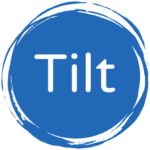Why should charities care about Agile?
What is Agile?
Agile has become a buzzword in many professional circles, but its meaning often remains frustratingly elusive. You’ve likely heard colleagues discuss “Agile” with a mix of enthusiasm and technical jargon, perhaps leaving you wondering what they’re really getting at?
Whether you’re completely new to the concept or have a vague understanding that hasn’t quite clicked, this post will give you a clear, actionable understanding of what an agile approach is, why it matters, and how it might be the strategic approach your organisation needs.
Agile ways of working are characterised by a bias towards action. They are designed to help you get out of the frustrating loop of talking about the issues you’re facing, and start making progress towards a solution. They set organisations up to deliver more value, be more attractive to talent, drive better outcomes and deliver improvements more quickly. This is a mindset shift towards behaviours, values and a culture which prizes an audience focus, outcome orientation, adaptability in uncertain contexts and empowered teams.
What difference does Agile make?
Agile ways of working were created by software developers but are now used across industries and functions, including in many charities. The approach works so well because it is iterative, empirical and value focused.
Organisations have reported:
- 4 times greater productivitythrough continuous small improvements and reduction in waste and errors.
- Delivering value 2-4 times more quickly with a 15-25% reduction in development costs because teams are prioritising what will have the most impact and reducing time spent delivering.
- A significant increase in staff engagement with higher talent retention and satisfaction.
At Tilt, we regularly see these types of results being replicated in the charity sector. For example:
The Amnesty International UK Communications team started collaborating more using agile ways of working and had their best fundraising year ever. They hit extremely stretching fundraising targets and had “more moments of celebration in the last 5 months than in the previous 3 years”.
Prostate Cancer UK took their ‘March the Month’ virtual fundraising product from £22k raised in year 1 to £109k in year 2 with no additional team or spend.
Refuge brought together a small cross functional team of fundraising and communications people to deliver key fundraising events. This saw International Women’s Day deliver 156% more income than the previous year.
A small autonomous team at Children 1st iteratively built a new fundraising scavenger hunt idea that smashed an age-old assumption that the families who get support from the charity wouldn’t fundraise for them.
The Agile mindset
The mindset shifts at the heart of agile ways of working – which make this kind of change possible – are best summed up in this model.
The expectation isn’t for us to be operating entirely over on the right hand side of the diagram, and certainly not overnight! Instead, moving further towards the right, over time, will unlock increasing adaptability. Learn more about these mindset shifts here.
These mindset shifts enable you to focus on delivering value to your audience and your cause, specifically through:
- Delivering in short cycles that provide value to your audience, then measuring the impact to make the next decision. By running lots of quick experiments with your audience you build your products and services based on real evidence.
- Bringing together cross-functional teams who self-organise and collaborate to solve audience needs. They concentrate on working at a sustainable pace (sometimes in 2-4 week ‘sprints’).
- Reflecting regularly on how your team is working together and how well they are delivering their agreed objectives. This aims to build trust, motivation and transparency of work.
Putting the principles into practice
So, what does this look and feel like in practice? Let’s take each section of the principles in turn:
How you do the work
Often, charity teams are very focused on why we’re doing the work – our cause – and what we need at the end – our targets. But, we aren’t used to spending time thinking about how we’re going to get there. In fact, we often keep doing the work in ways we know aren’t serving us, but we don’t make time or head space to explore different ways of working.
Agile helps you to rethink how you get things done: with cross-functional teams, intentional collaboration, focus and regular updates on how it’s going.
Get started:
What the work is like
An agile approach is all about cutting out the noise of competing ideas and priorities; listening to the data and making rapid progress on impactful actions that move you forward bit-by-bit. And you keep adapting and iterating on how you’re working too, learning as you go.
Rather than getting overwhelmed by entrenched issues and the perceived need for perfection, agile’s focus on audience and breaking down work into manageable, impactful chunks is energising and empowering.
Get started:
How you work as a team
The team is really the crux of agile ways of working. Collaboration doesn’t happen by accident, it happens with intention and just enough structure. By providing a shared framework and language, agile means everyone knows how their work is contributing to the big picture.
Agile ways of working emphasise equity and transparency. By giving everyone an opportunity to be heard, you open up a wider range of ideas and perspectives. By working in the open you give stakeholders access to your progress without the need for lengthy reports and documentation. This all builds a team that are empowered to make decisions and move quickly.
Get started:
Agility is all about taking action
Reading about agile is a great start but – as we said – agile is all about a bias towards action. You really need to give it a go to see its impact! We recommend finding a problem or project where you can trial some of these tools for yourself. And if you need support to get going, we’d love to chat about how we can work with and coach you and your team.










